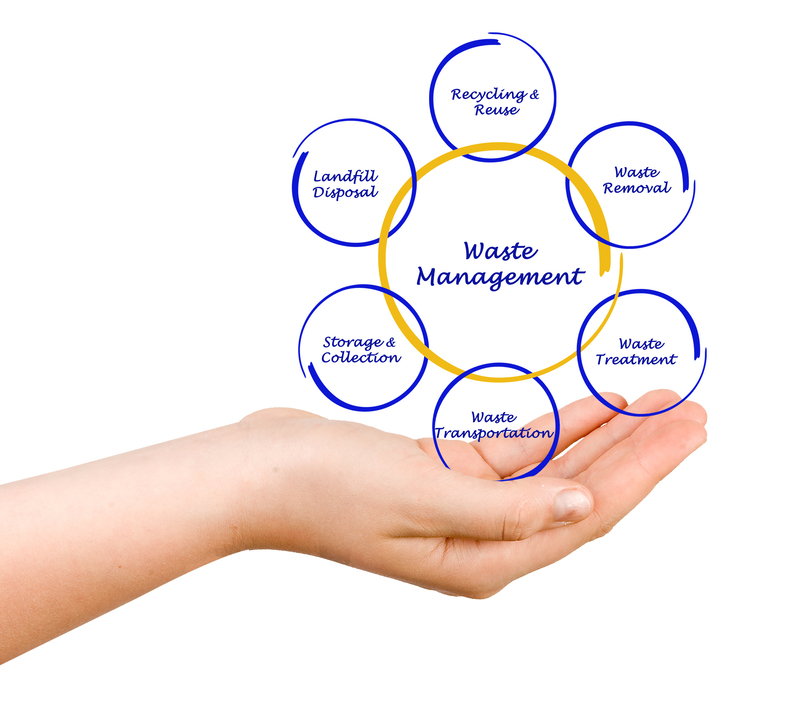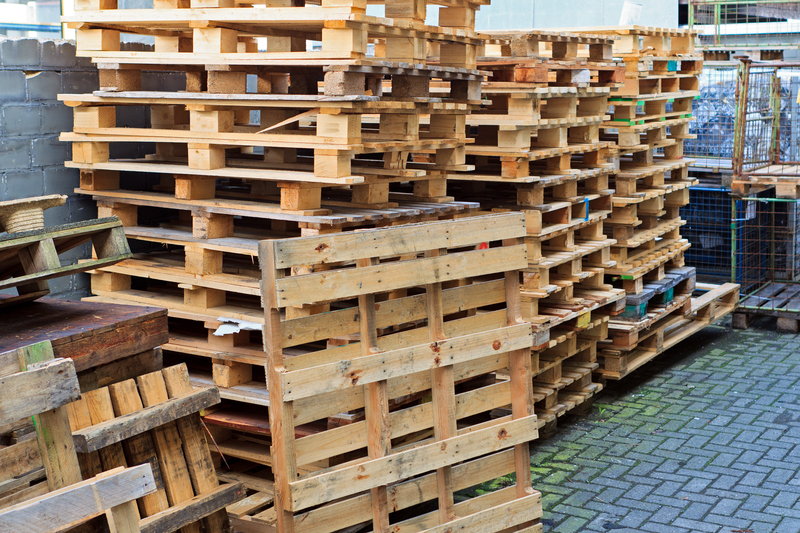How to Give Your Used Cookware a Second Life Through Recycling
Cookware is a staple in every kitchen, but what happens when your pots, pans, and bakeware have reached the end of their cooking days? Rather than tossing them into the trash, there are eco-friendly and imaginative ways to repurpose and recycle them. This comprehensive guide explores how to recycle old cookware, how to give used cookware a second life, and creative avenues to ensure your kitchen tools don't end up in landfills.
Why Recycle Used Cookware?
Millions of pots and pans are discarded each year, contributing to growing landfill issues. Recycling old cookware not only reduces waste but also conserves resources by repurposing the materials. Understanding the importance of recycling cookware can motivate individuals to make sustainable choices within their homes.
- Environmental Impact: Old cookware, especially non-stick pans, can leach chemicals into the environment. Recycling diminishes this risk.
- Resource Conservation: Metal and other materials used in cookware are valuable and can be reused in other products.
- Creative Opportunities: Giving cookware a second life can result in innovative DIY projects and unique household art.

Understanding What Cookware Can Be Recycled
Before you dive into the recycling process, it's vital to know what types of cookware can be recycled. Most cookware is made from metal, with or without coatings, and sometimes contains handles or parts made from plastic, glass, or wood. Here are the common types and their recyclability:
1. Metal Cookware
- Cast Iron: Extremely durable and 100% recyclable as scrap metal.
- Stainless Steel: Highly recyclable; often accepted at scrap yards.
- Aluminum: Lightweight and valued by recyclers.
- Copper: Valuable but less common in cookware.
Note: Remove any non-metal parts if possible. Many recycling centers accept only pure metals.
2. Non-Stick & Coated Pans
- Non-stick (Teflon or ceramic) pans can be recycled as scrap metal after removing coatings or handles in some cases. Check with your local recycling center for guidelines.
3. Glass & Ceramic Bakeware
- These are rarely accepted at curbside recycling programs due to high melting points that differ from regular glass. Consider upcycling or specialized recycling services.
4. Plastics, Handles, and Lids
- Plastic handles or glass lids may require special processing. Detach and recycle separately where possible.
Preparing Cookware for the Recycling Process
Proper preparation of your old pots and pans ensures they are suitable for recycling and increases the likelihood they'll be accepted. Here are key steps:
- Clean Thoroughly: Remove all food residue and grease to avoid contamination.
- Disassemble Components: Separate lids, handles, screws, and any non-metal pieces.
- Check for Coatings: For non-stick or coated cookware, consult your local recycling center for proper steps. Some facilities can accept coated pans, but many cannot.
- Sort Materials: Sometimes it's necessary to sort metal types, especially at scrap yards.
When in doubt, call your local recycling center for advice on how to recycle your specific cookware items.
Where and How to Recycle Old Cookware
1. Curbside Recycling Programs
Most curbside metal recycling programs do NOT accept cookware due to mixed materials or coatings. However, some municipalities accept small appliances and cookware during special collection events. Always check your area's recycling guidelines.
2. Scrapyards & Metal Recycling Centers
This is the most straightforward solution for metal cookware. Scrap metal businesses accept and process old pots, pans, and bakeware. Here's how to proceed:
- Locate a nearby scrap metal center.
- Prepare your cookware (cleaned, non-metal parts removed).
- Consider weighing your metals - copper and aluminum may bring a small payout.
- Ask if they accept coated cookware or if stripping is required.
3. Manufacturer Take-Back Programs
Some cookware brands are committed to sustainability. Companies like Calphalon and others offer mail-back or drop-off recycling for their products. Visit your brand's website or customer service for options.
4. Local Recycling Events
Community recycling events and household hazardous waste days sometimes accept cookware and other odd household items. Monitor municipal newsletters and social media pages for announcements.
5. Donate Usable Cookware
If your old cookware still has a bit of life left, consider donating instead! Many charities, shelters, secondhand shops, and community kitchens welcome gently-used pots and pans. This is often the greenest option.
Creative Ways to Reuse and Repurpose Old Cookware
Sometimes, the best way to keep cookware out of the landfill is to repurpose it creatively. Here are some inspiring ideas for giving old pots and pans a new purpose in your home, garden, or community:
1. Garden and Planter Ideas
- Pots as Planters: Drill a drainage hole and use old saucepans, frying pans, and teapots as quirky outdoor plant pots.
- Herb Gardens: A muffin tin, when filled with soil, makes a perfect starter for herbs or succulents.
- Hanging Baskets: Attach sturdy handles and hang pans for elevated garden displays.
2. Unique Home Decor
- Wall Art: Arrange colorful pans and lids as a stunning kitchen wall feature.
- Clock Conversion: Turn an old pan or baking dish into a funky kitchen clock.
- Photo Frames: Shallow pans or lids make eye-catching, industrial-style photo displays.
3. Organizational Tools
- Desk Organizers: Use deep pots for storing office supplies, craft tools, or even as a remote control caddy.
- Drawer Dividers: Old muffin tins can sort small items in drawers - perfect for jewelry, hardware, or art supplies.
4. In the Workshop
- Paint Trays: Flat, old baking pans are perfect for mixing paints or holding small screws and bolts during projects.
- Tool Storage: Deeper pots can be repurposed for tool or garden tool storage on a workbench.
5. Fun DIY Projects with Kids
- Mini Drums: An upside-down pan and a couple of wooden spoons make a simple drum set.
- Craft Containment: Use old cake pans to corral beads, Lego pieces, or game parts during playtime.
Unleash your creativity! The possibilities are limited only by your imagination.
Things You Shouldn't Do With Old Cookware
- Do Not Toss in Regular Trash: Metals and coatings belong in specialized recycling streams, not in the landfill.
- Don't Burn Non-Stick Pans: Some coatings release toxic fumes when heated.
- Don't Reuse for Cooking if Safety is a Concern: Damaged or peeling non-stick or rusty cookware is unsafe for food use.
Proper disposal and upcycling are always the best options for worn-out cookware.
Common Questions About Recycling Used Cookware
Can all types of cookware be recycled?
Most metal cookware (aluminum, cast iron, stainless steel, copper) can be recycled at scrap yards. However, non-stick coatings or mixed materials may require special handling, and glass or ceramic items are often not accepted by regular recycling programs.
What if my cookware is still functional?
Donation is ideal if your cookware can still be used. Consider giving to charities, shelters, or neighbors.
Will I get paid for recycling my cookware?
You may earn a small amount from scrap metal, especially if you have larger quantities of copper or aluminum. However, most non-ferrous metals fetch only modest prices.
Does cookware need to be completely clean before recycling?
Yes. Cleanliness prevents contamination and processing problems. Remove as much food residue, grease, and non-metal parts as possible.

How to Organize a Cookware Recycling Drive in Your Community
If you're passionate about sustainability, consider organizing a cookware recycling event in your neighborhood. Steps include:
- Contact local scrap yards or recycling centers to partner and arrange collection.
- Promote the event via flyers, social media, and community boards.
- Offer drop-off locations and specify preparation guidelines for participants.
- Donate usable items to charities collected during the event.
This collective action can help divert significant waste and foster greater community awareness of environmental responsibility.
Conclusion: Make a Difference With Every Pan
Giving your used cookware a second life isn't just about decluttering the kitchen; it's a step toward a more sustainable planet. Whether you recycle old pots and pans at a scrap yard, donate gently-used cookware, or unleash your DIY spirit to create planters and art, every action helps reduce waste and conserve resources.
Remember: Always check your local recycling rules, prepare items correctly, and spread the word about the positive impact of cookware recycling.
Start today--transform your worn-out kitchen gear and give it a new lease on life through recycling and upcycling. The environment--and your creative spirit--will thank you!
